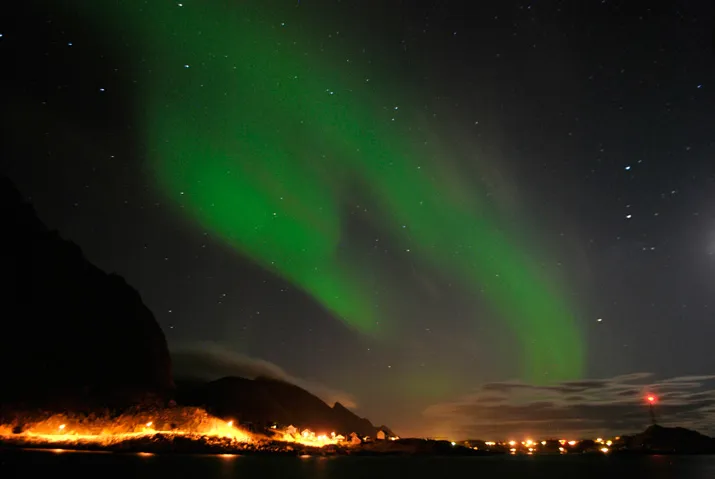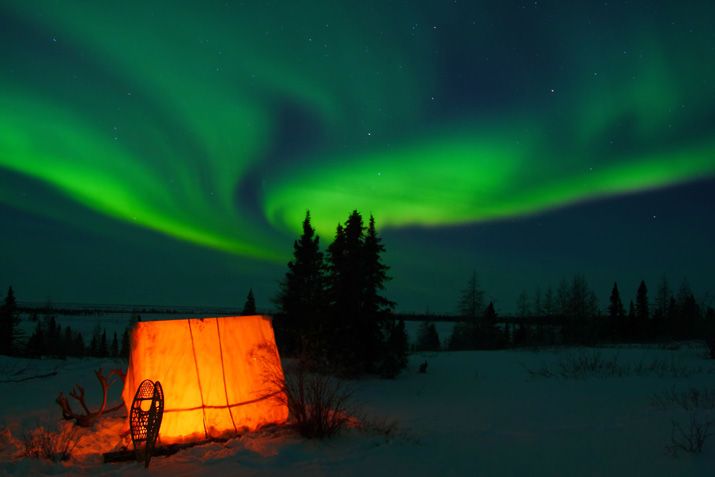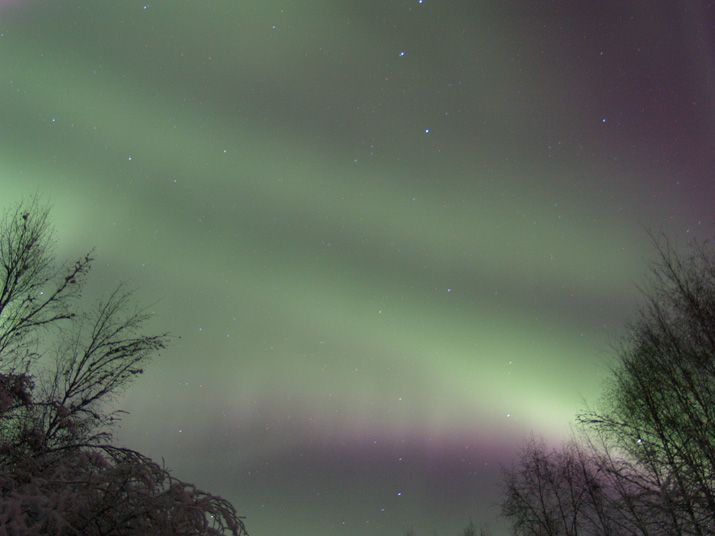Gaze at the Aurora Borealis
One of the best reasons to head to Canada for vacation is to catch the beautiful Northern Lights
Never mind the grizzly bears, the glaciers and the tundra. The best reason to go north (to Alaska, the Yukon or anywhere else above about 60 degrees latitude) is to see the Northern Lights.
Try to imagine the most colorful, textured sunset you've ever seen, then send it swirling and pulsing across an otherwise clear and starry sky. Maybe add some faint outlines of mountains on the horizon and a hooting gray owl for ambience.
But even more fabulous, in its own way, is the physics. Your planet is being buffeted by solar wind—particles of protons and electrons that the sun spews into space. Some of the charged particles get sucked into the earth's magnetic field and flow toward the pole until they collide with our atmosphere. Then, voilà: the aurora borealis (or aurora australis, if you happen to be at the bottom of the Southern Hemisphere).
The best times to see the aurora are around the fall and spring equinoxes, according to Janet Green, a physicist at the National Oceanic and Atmospheric Administration (NOAA), when geomagnetic storms—disturbances in the earth's magnetic field—are strongest. It helps if the sun is near a peak of activity in its 11-year sunspot cycle. You can sign up for aurora alerts online or keep an eye on NOAA's geomagnetic storm forecast. But most of all you need a cloudless night, a flask of something warm and bracing, and pepper spray in case a grizzly tries to join you for the show.
Planning Your Next Trip?
Explore great travel deals
Smithsonian magazine participates in affiliate link advertising programs. If you purchase an item through these links, we receive a commission.
/https://tf-cmsv2-smithsonianmag-media.s3.amazonaws.com/accounts/headshot/laura-helmuth-240.jpg)



/https://tf-cmsv2-smithsonianmag-media.s3.amazonaws.com/accounts/headshot/laura-helmuth-240.jpg)